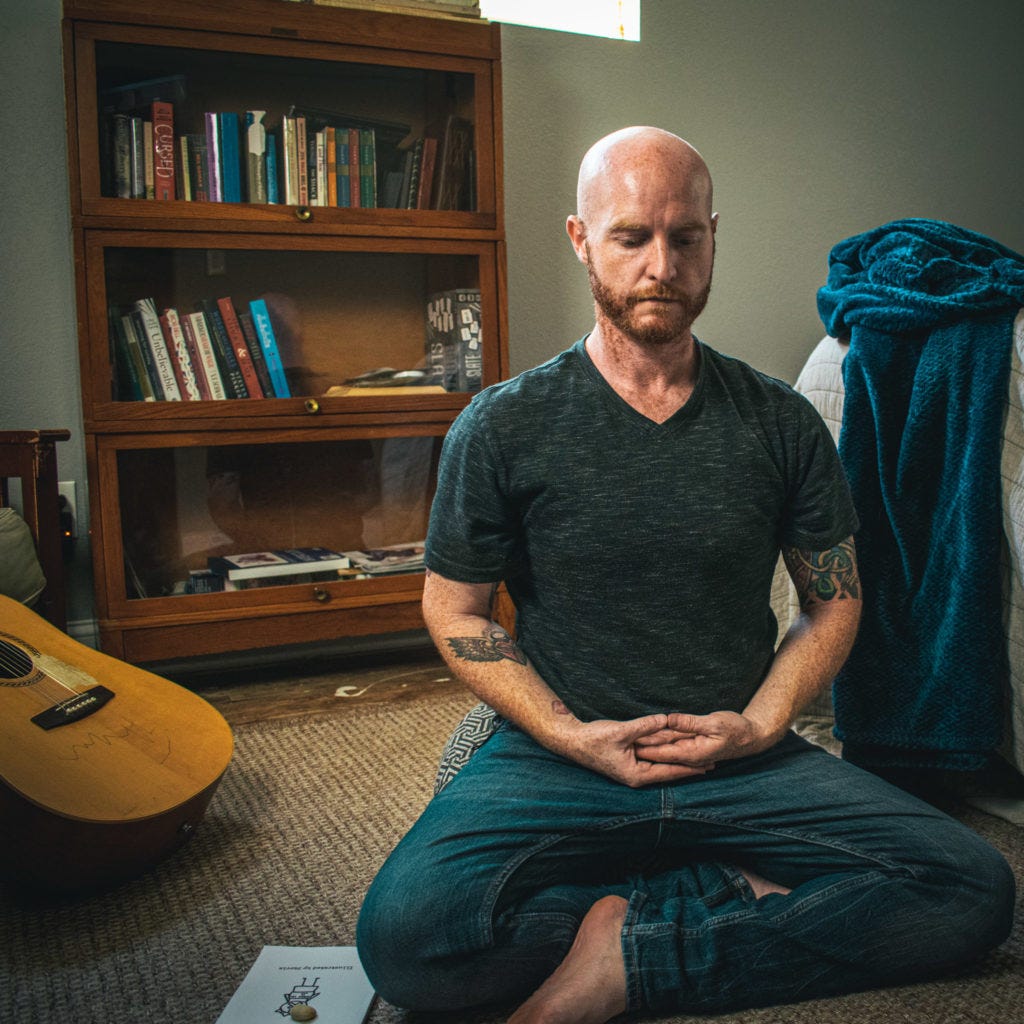The Tattooed Buddha: Snapshots of Meditation
Recently I was asked by the lovely folks over at the Tattooed Buddha to contribute to their SnapShots of Meditation series, a project that seeks to show what real-world meditation looks like by highlighting the daily observances carried out by everyday practitioners and their reasons for practicing. It's always such a pleasure to get to work with the Tattooed Buddha team, and I always jump at the chance to do so. Hope you like my contribution to the series, and be sure to head over to the Tattooed Buddha website to read what other contributors have to share.
So much of creativity and the creative process is about seeing; seeing clearly and seeing differently.
In fact, Seth Godin writes that, “Artists, at least the great ones, see the world more clearly than the rest of us”. This is, for me at least, why “artistry” and spirituality are so intimately connected and intertwined. Achieving and maintaining this kind of atypical ability to see and perceive is intrinsic to being an artist, but being an artist has absolutely nothing to do with one’s mastery over watercolors, oils, marble, or clay, because art, itself, has nothing to with any of those mediums, or any other other medium for that matter.
The medium is irrelevant and ultimately inconsequential. “Art,” as Godin goes on to say, “is the intentional act of using your humanity to create a change in another person.”
Meditation is an art, and art is a mediation. Both function as the means by which our perception becomes alerted to the immense profundity laced throughout the realness of the present moment. In art we are allowed to exercise a kind of analytical awareness.
Our consciousness becomes concentrated and compounded, and we are attentively attuned to the rich interplay of texture, color, tempo, and composition. Similarly, “To meditate,” as Stephen Batchelor explains, “is to probe with intense sensitivity each glimmer of color, each cadence of sound, each touch of another’s hand, each fumbling word that tries to utter what cannot be said.” And in both cases, we are at our best, and our most artistic when the change created within ourselves elicits a change in others.
If you enjoyed this article, consider supporting my work by Buying Me a Coffee.



